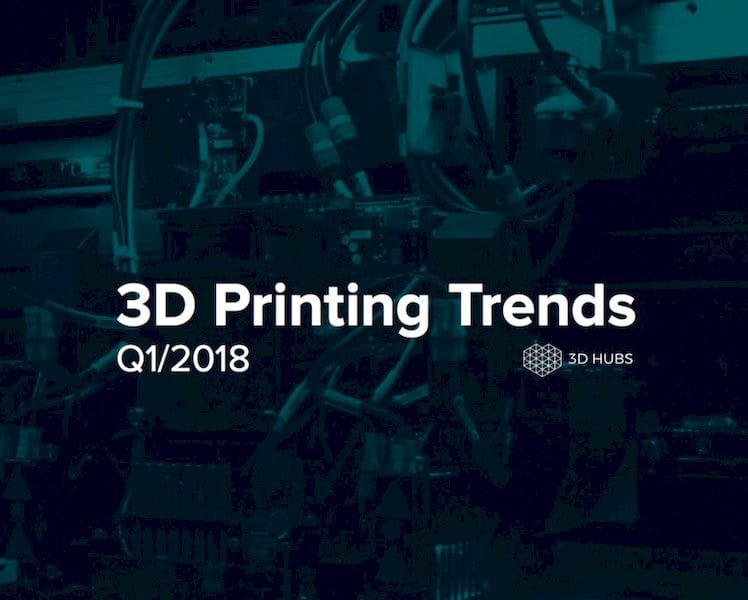
3D Hubs released their quarterly report on 3D printing trends and it got me thinking about machine lifetimes.
The 3D print community network connects unused 3D printers from around the world to developers seeking inexpensive local 3D prints. It’s like Uber for 3D printers, effectively.
But across all those transactions 3D Hubs can discover all sorts of interesting information about 3D printer usage, quality and reliability by collating and analyzing the data. They’ve been issuing these reports quarterly for years now, and I’m always fascinated by the results. This report is one of the very few objective sources of data about 3D printer use in the public.
This report divides the 3D printer universe into two categories, Industrial and Desktop. The Industrial category is filled with highly-rated SLS and SLA units from EOS, 3D Systems, Stratasys and Shining 3D, as well as newcomer HP, who use a slightly different powder-based process, MJF. All of these machines produce excellent prints, so it’s not surprising the print quality ratings on all don’t vary much.
HP has shot to the top of their most frequently used list of Industrial 3D Printers, however, besting the next most frequently used 3D printer (an EOS model) by over 50%. This is likely due to HP’s machine design, which favors bulk production of prints, and the fact that 3D Hubs has recently had signups of at least one large HP operation.
But what’s more interesting to me is the movement within their Desktop category. Or rather, the lack of movement. While desktop units don’t produce parts of the same quality as the industrial machines, all of the top ten quality ratings on the desktop units rank high, with only 0.09 points separating first from last.
The obvious news from this list is that Makergear’s M2 has made the top of the list, albeit by only 0.01 points. Really, all of the machines on this list are very good machines.
But curiously, some of them are rather old.
Sure, there are a number of newer machines on the list, such as the Prusa i3 MK2’s, the Creality CR-10 and the Form 2, but there are also the Flashforge Creator Pro, a machine many years old. There’s also the MakerBot Replicator 2, a machine announced in 2012! That’s almost six years ago.
Similarly, their most used Desktop Printer list also includes the Flashforge Creator Pro, and even the Ultimaker 2, a machine from 2013.
Why are these seemingly ancient 3D printers still apparently in wide use, at least according to 3D Hubs report?
3D printers, particularly older models, are well known for their frequent ability to break. As machine design evolved, current machines tend to be more reliable and are generally more well designed. These older machines should have been retired, but they have not.
The reason for this is actually obvious: it’s because they still work! It seems a set of individuals who acquired them years ago figured out how to best use them – and keep them in good repair – to continue to very actively participate in 3D Hubs’ network.
What’s surprising is that many newer machines rank LOWER than these older machines on 3D Hubs’ quality scale. I suppose this is evidence of the incredibly good design made by MakerBot, Flashforge and Ultimaker years ago on those particular machines.
So what is the lifetime of a 3D printer given this information?
It appears that print quality is not necessarily an attribute that is increasing on specific machines over time, and it’s likely the good results were obtained from fine tuning of the older machines. Perhaps we could say that GENERALLY the print quality 3D printers has been increasing but it’s clear that the best possible quality has already been achieved by several machines, including some older models.
The useful lifetime of desktop 3D printers seems quite long given this information, perhaps even ten years. However, it likely will require considerable tuning and repair skills to keep up with newer models.
It may be that the ultimate fate of these machines might be the introduction of future machines that offer much better speed, quality and reliability at much lower cost. The older machines might still operate, but their output would be surpassed by other machines.
Via 3D Hubs

